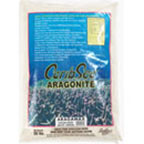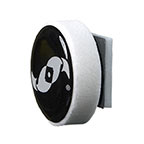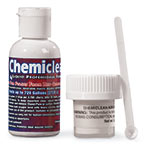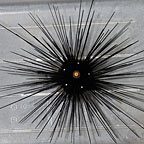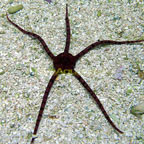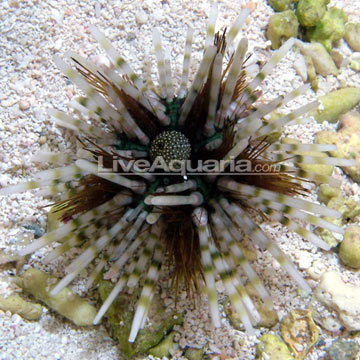
Additional locales and sizes may be available!
Additional locales and sizes may be available! Email me when availableQuick Stats
What do these Quick Stats mean? Click here for more information
What do these Quick Stats mean? Click here for more information
Overview
The Banded Longspine Urchin, also known as the Longspined Urchin or Hatpin Urchin, has a black central body with long, sharp spines, sometimes reaching 9 inches in length. The spines have hundreds of alternating light and dark bands. Some spines are strong, thick, and hollow, whereas others are shorter and finer.
During the day it often hides in rocky crevices, and in the wild, can be found in large aggregations with other Banded Longspine Urchins. The aquarium should have stable rock work and some shaded areas. During the night, the Banded Longspine Urchin comes out to feed. Juveniles generally eat algae, and the adults are carnivores, preying on invertebrates. Smaller fish, such as the Banggai Cardinal, will often seek shelter among its spines during the day, leaving their protection at night to eat. It will not tolerate copper-based medications and needs low nitrate levels. If it begins to shed its spines, it is a sign of poor water quality.
Use care when handling the Banded Longspine Urchin, the spines are venomous; the sting from there spines are similar to a bee sting.
In the aquarium, food can be placed near its spines or even on them. The spines have the ability to transport the food to its mouth.
Approximate Purchase Size: 1-1/2" to 3-1/2"



